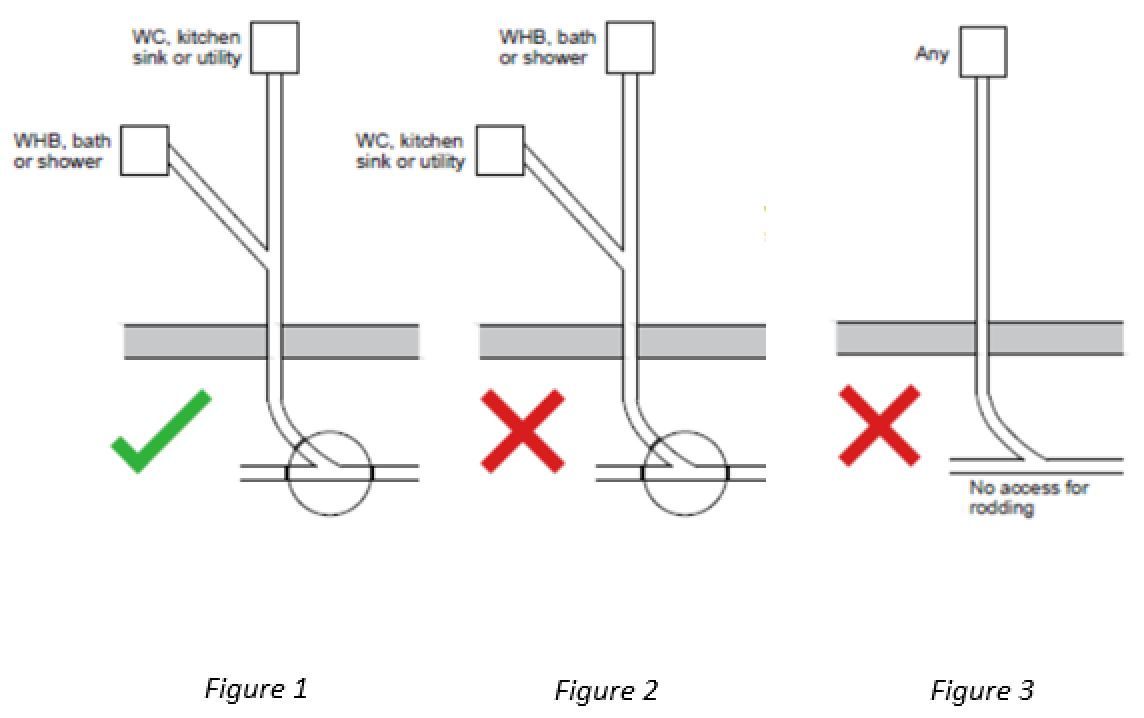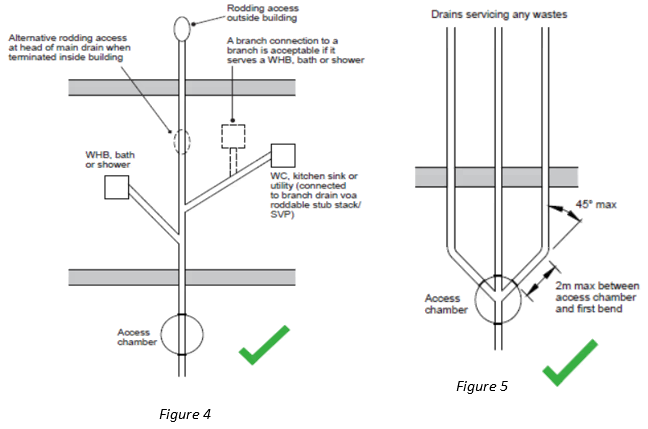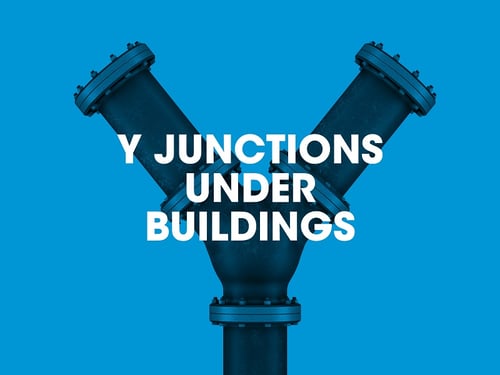When can Y-junctions be used?
Drains carrying heavily soiled waste (kitchen sink, WC, washing machine etc.) should not be connected via Y-Junctions under a building as maintenance will be difficult (Figure 2&3 below). They should be in straight runs to an access point outside the building to allow the drain to be rodded. If Y-Junctions are used, they should only be used in the circumstances shown below:
- Where the branch drain discharges lightly soiled waste such as a wash hand basin, shower or bath, a Y junction may be used to connect to another drain under the building (see Figure 1 below).

- Branch drains formed off Y-Junctions can be used where (see Figure 4):
- The main drain extends the full length of the building and external rodding access is provided at both ends of the main drain. If this is not achievable, an alternative rodding access point can be provided of the head of the main drain which terminates inside the building
- Branch drains carrying heavily soiled waste are provided with a roddable stub stack. This should not involve removing any sanitary fittings or boxing (so an access plate should be provided.

External access chambers can serve up to three branch drains provided the angles of the connections, bends and distance from the first bend comply with Figure 5.
Warranty position
This technical document has provided guidance on where Y-Junctions can be used, if possible, they should be avoided as they makes it difficult to clear blockages, however if they are proposed, they should only be used in the circumstances highlighted above.

